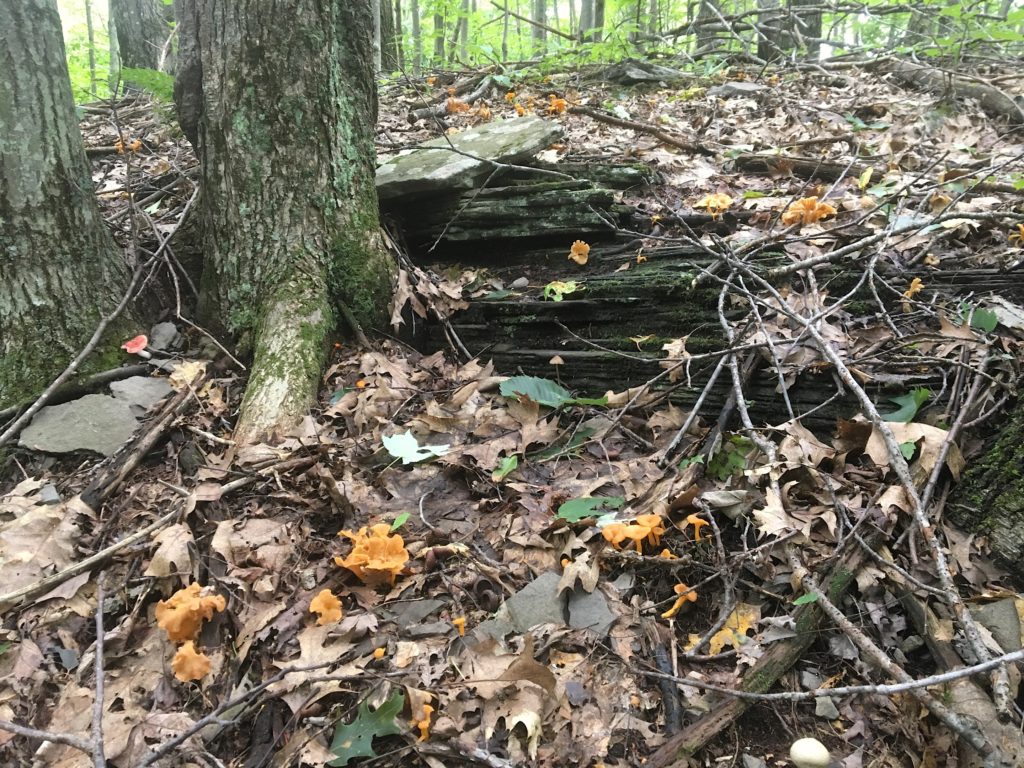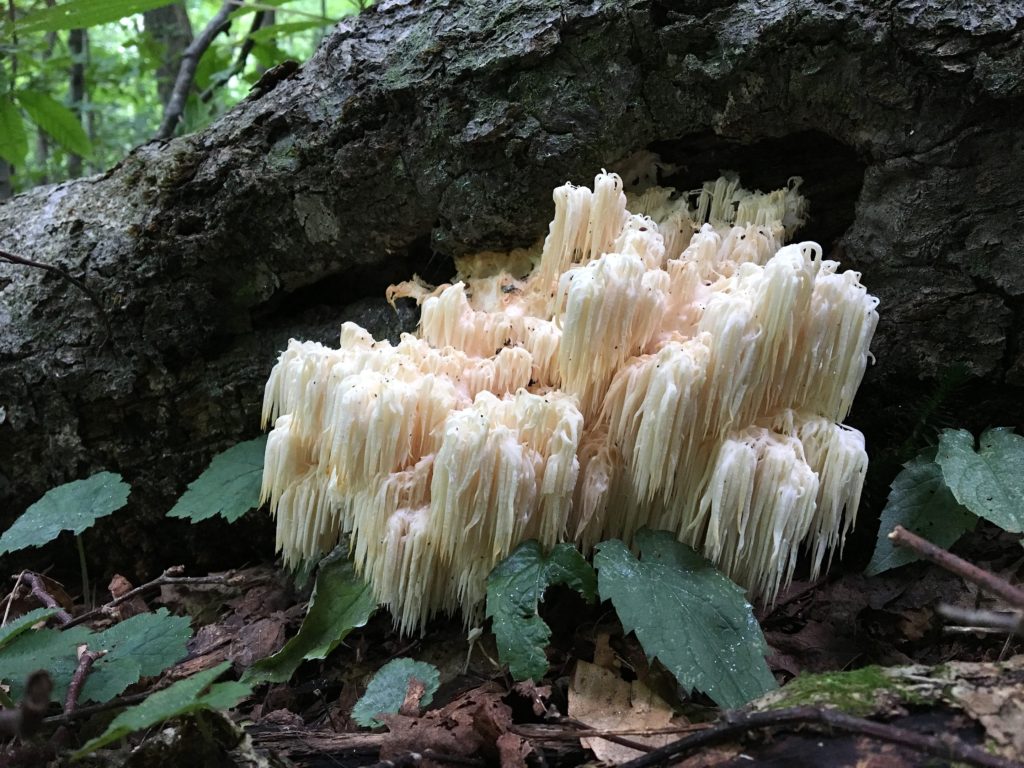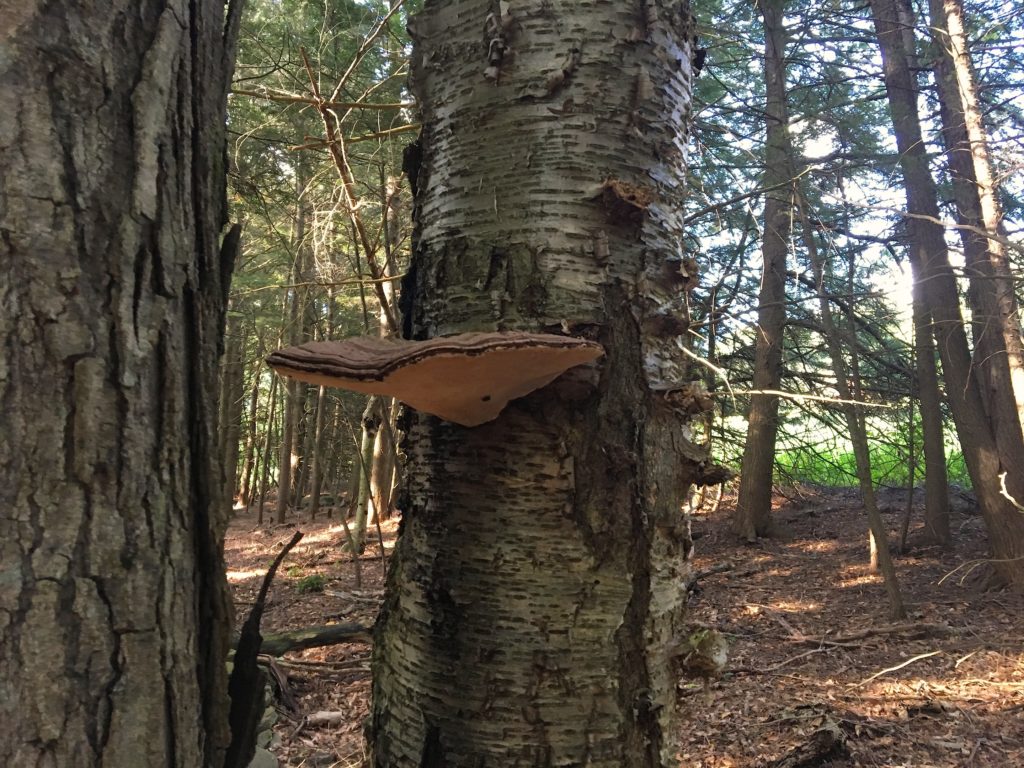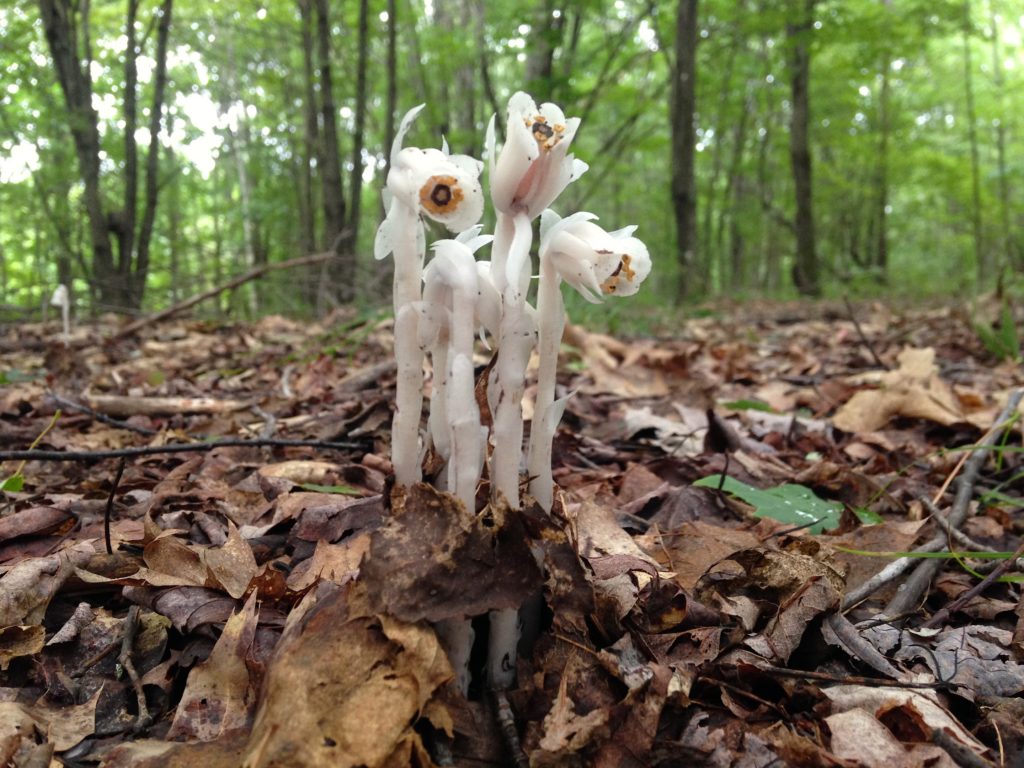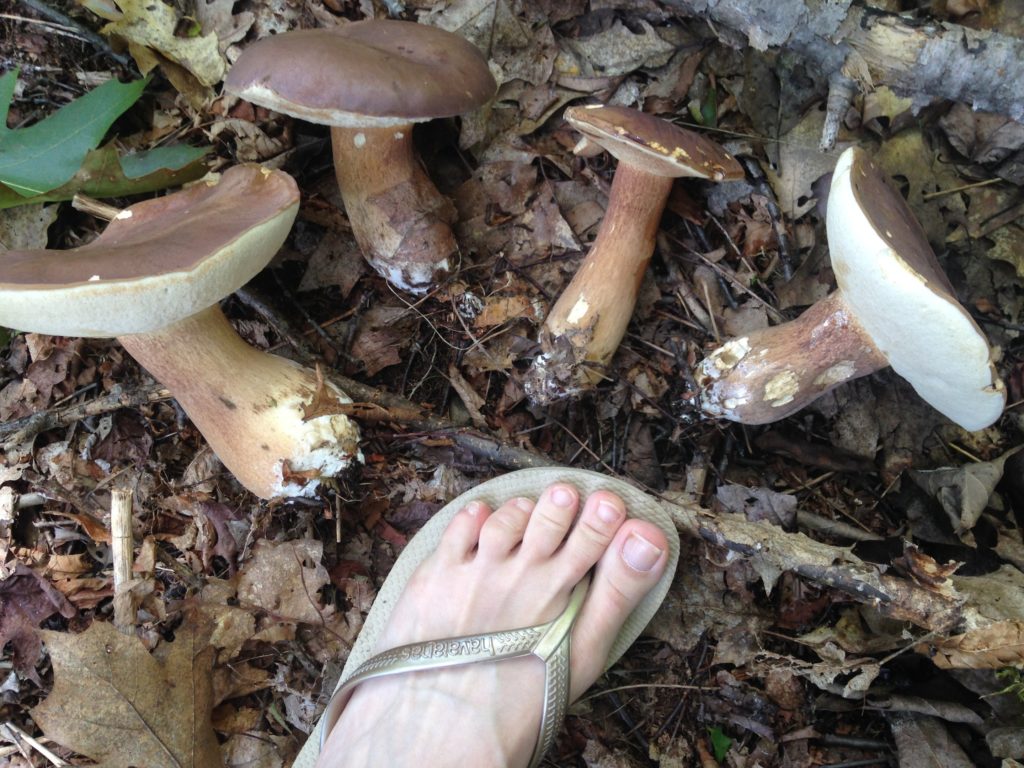Chanterelles are in the same family as the northeastern Black Trumpets (Craterellus), but they have a few toxic look-a-likes, so they’re much trickier to identify than Black Trumpets. When you’re foraging for mushrooms, a positive identification is essential before you even think about eating. For example, there are plenty of bright orange mushrooms in the forest that you should not eat and so if there is any confusion, forget it. The intricacies of mushroom hunting are so varied and convoluted that, for the layman, most mushrooms are not worth the risk of misidentification. Rest assured that mycology – the study of fungi – is a lifetime of learning and that most of what you find in the forest should be left alone.
So – to identify these chanterelles pictured here, as I did with the boletes I found two years ago, I sought the opinions of at least two experienced foragers to help identify them. Continue reading

